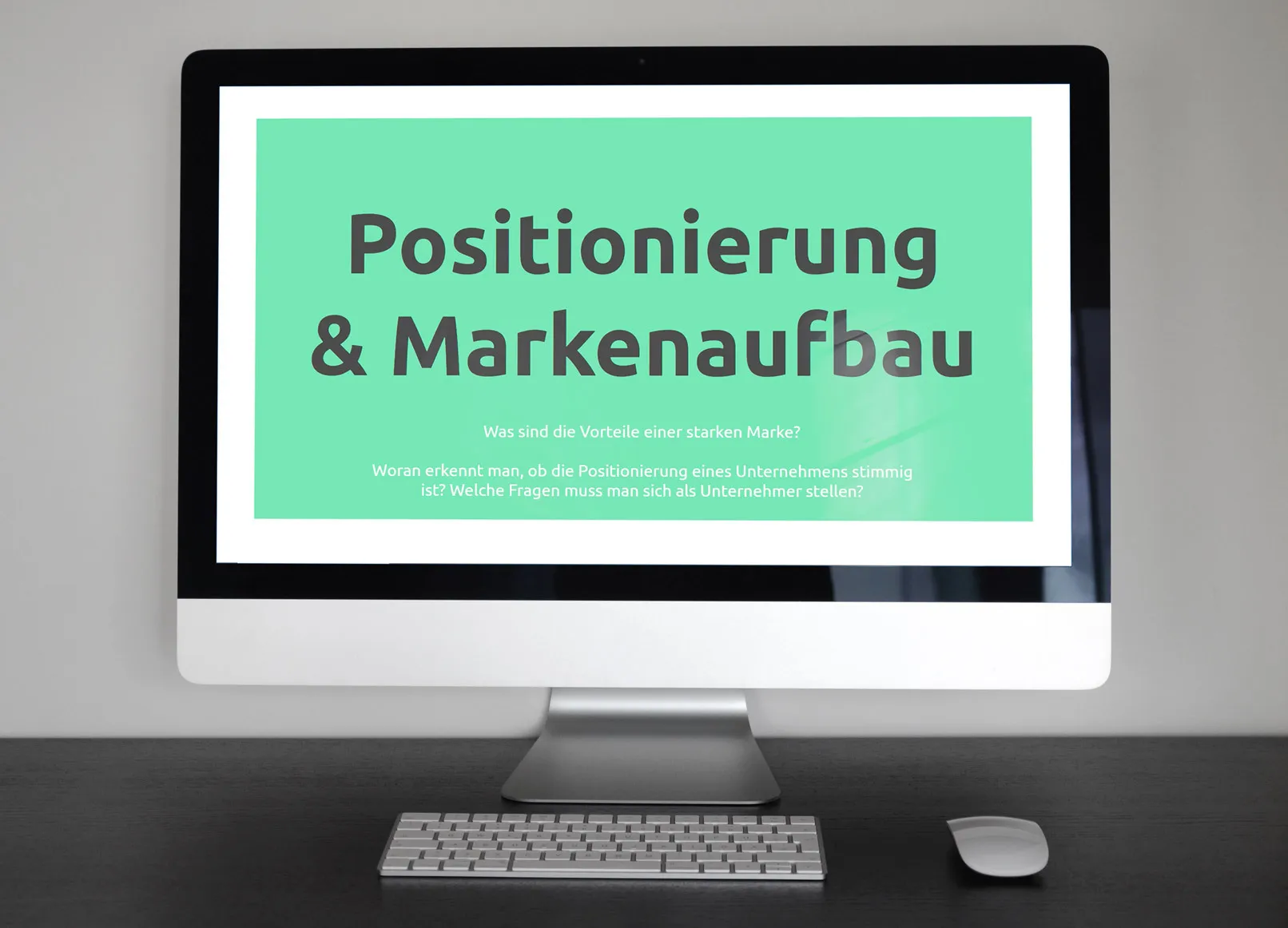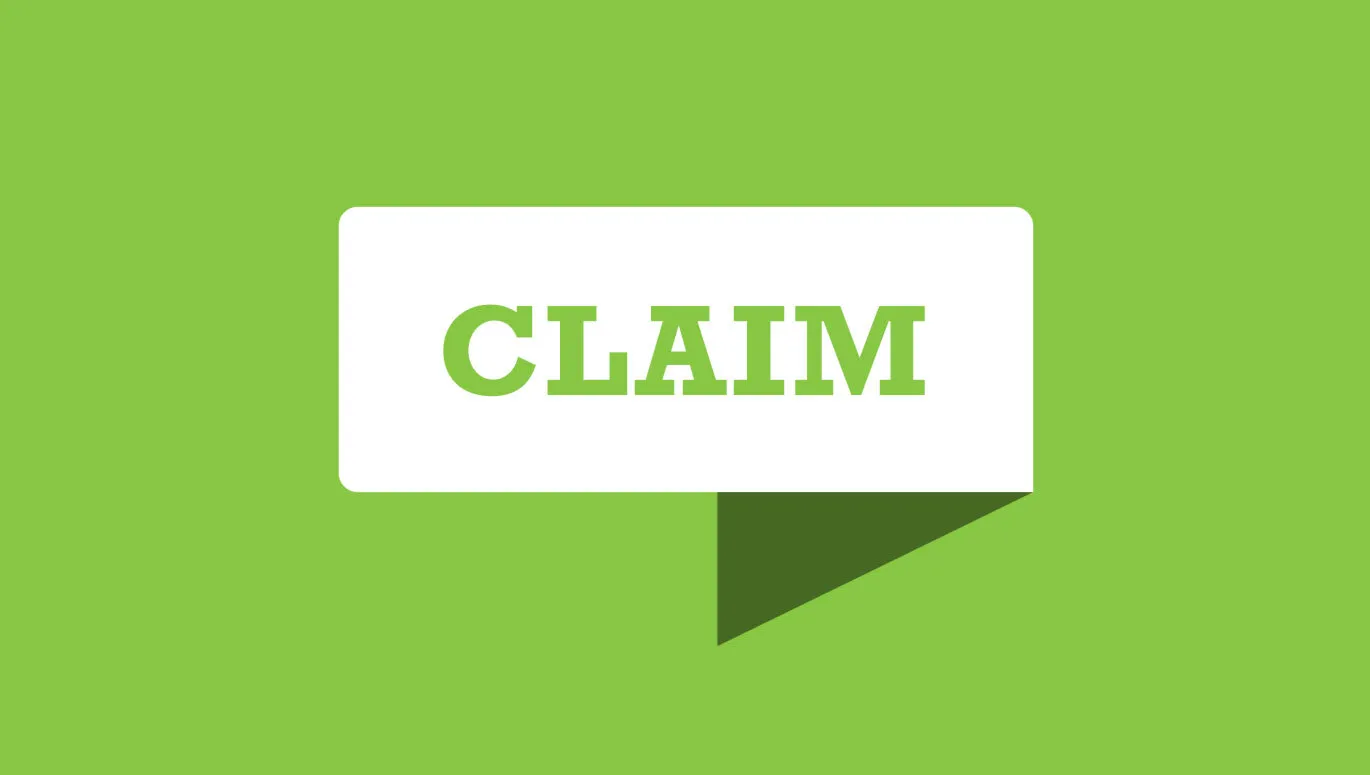Whether it's "Think different", "The Queen of Table Waters" or "I love it" - a good claim is not only easily memorized, but also shapes the brand itself. How to find the right and powerful claim for your brand, which options you can use for development and why a slogan is not a claim: we reveal this and more in our blog on the topic of claim creation. All accompanied by examples of successful claims.
What is a claim and why do you need it?
A claim is the essence of your brand, boiled down to one sentence or a partial sentence. Together with your company name and logo, it forms an immovable unit for the recognition value and substance of your brand. A claim ...
- ... is your brand promise.
- ... is the most important argument that speaks for your brand.
- ... makes your brand unmistakable and helps it stand out from the crowd.
- ... shows very specifically how you have positioned your brand.
- ... promotes awareness of your brand.
If you create a good claim, it will accompany your brand forever at best. Just think how long it has been "BMW - the joy of driving".
What types of claims are there?
Not all claims are the same. Before you create your own claim, first think about what you want to say. Important: Both your company name and your claim do not have to say specifically what you do or offer as a company. It can, but it's more charming if you use it to convey a feeling and use it as part of your storytelling. Let's take a look at the different types of claims:
The claim for positioning
You use it to communicate to your target group what you are able to achieve with your portfolio. In other words, not what you do, but how and why you do it.
Example Audi: "Vorsprung durch Technik"
The claim for the claim
With this type of claim, you communicate to your target group what you have set as a goal for your brand or company. A goal that reflects everything you do as a promise to your customers.
Example Toyota: "Nothing is impossible."
The claim for the attitude
With this claim, you either express a concrete benefit of your offer for your target group or you get to the heart of their attitude to life. A lot of emotion is required here.
Example McDonalds: "I love it"
More success for your company - with these video trainings:
Claim vs. slogan ... what's the difference?
At first glance, claim and slogan seem to be two words for one and the same thing. After all, both are concise statements. And if you scour the Internet, you'll find that the terms claim and sl ogan are often used interchangeably.
But beware - there is an important difference: a slogan is only used by the brand for the duration of a campaign. A claim , on the other hand, remains associated with the brand and logo forever. You can therefore use a slogan as the title of a temporary campaign or to focus on a specific product. With a claim, on the other hand, you give out the slogan for your life's work. This is the difference in practical application:
Example Hornbach
- Campaign slogan 2022: "Come to Hornbach. Before your garden does."
- Claim: "There's always something to do."
What makes a claim great?
As everywhere in marketing, beware of generalities and interchangeability. If your claim could just as easily be stuck on your neighbor's company car - forget about it. Cheap and deliberate puns also tend to be annoying and wear out over time. And what is a company actually trying to tell you when it uses the word "innovation" in its claim? Our tips:
- A good claim knows what it wants to say.
- It fits exactly with the tonality of your brand.
- It is unique and gives the brand identity.
- It is absolutely credible.
- It is so easy to remember that it catches in the minds of your target group like a catchy tune.
- It not only says what you do as a company, but also how and why.
- It evokes exactly the emotions you want to trigger in your target group.
- It can electrify: Nike. Just do it!
- It can give warmth: Edeka. We love food.
- It can target the price sensation: Media Markt. I'm not stupid!
- It can inspire confidence: Knorr. Good food. All good.
- It can become a household word for the masses: IKEA. Are you still living or are you already living?
How can you find a good claim?
First of all: there is not just one direction, but many. The decisive factor is whether it suits you and your brand. You can follow the rules - or break them if it's right for you. Just think of Haribo. Claims are supposed to be short. But what does our gummy bear company do: "Haribo makes children happy. And adults too." As you know, the claim has worked perfectly for many years.
No matter which approach you choose to find your claim - harmony is always the key. As with a good song, the rhythm of the claim is what counts. You notice it immediately when you say it out loud. But what approaches are there to developing a good claim ? We'll give you a few here:
Try to keep it short.
A triad is always a good thing. As in fairy tales or mythology, the number 3 is also magical in reality. So if you can find 3 words to make a decisive statement, you have a good chance of making your brand unforgettable with your claim.
Example BMW: "The joy of driving."
Use an intensification in a modified form.
If you break with expectations and surprise your target group, you have the sympathy on your side. With the intensification, you target the superlative and replace it with your brand name, for example. The effect: You only suggest that you offer the best, but don't say it directly. That's more likeable than just blurting it out.
Example Paulaner: "Good, better. Paulaner."
Use alliteration.
If almost every word in the claim has the same first letter, it catches in people's minds more quickly. Give it a try.
Take the Financial Times, for example: "Know what's important."
Try a rhyme.
You don't have to be called Goethe to come up with a catchy rhyme. The advantage of rhyme is that it is easier to remember than a normal sentence. But it is important to be sensitive when creating them. A rhyme can quickly come across as too childish, which is probably not what you want to achieve. In our example, however, it is perfectly put together:
Example Haribo: "Haribo makes children happy. And adults too."
Change a saying.
We all know the vernacular with its idioms. They are ingrained in us, and it immediately clicks in our heads when we hear one. Can you adapt an idiom to your brand? Then that can be the key to a high level of brand awareness.
Example Müller: "All Müller or what?"
Make a surprising statement.
This is certainly the supreme discipline when it comes to claim creation: surprise your target group with an unusual statement that they have never heard before, but which they feel they have known for a long time. This is the stuff of unforgettable memories. If you succeed, the claim can be a little longer. As you know, in fairy tales and mythology, the number 7 has a magical attraction alongside the number 3. Do you notice that both Haribo and IKEA use exactly this number of words in their claim?
Example IKEA: "Are you still living or are you already living?"
Try a crystal-clear statement
It doesn't always have to be a big surprise. The key to a good claim is often much closer than you think. Saying exactly what you do and at the same time letting a sense of why resonate can be a good fit. A claim like this can hit home because it comes across as honest and direct. But beware: it seems easier to create than it actually is. Make sure that your claim, despite its directness and simplicity, is still strong and engaging.
Example: Workers' Samaritan Federation: "We help here and now"
Contrast problem and solution
If you manage to succinctly get to the heart of your target group's need and then use your brand name as the solution, this can be a very concise option.
Example Fielmann: "Glasses: Fielmann"
You can also combine some of the approaches described. There are also many more possibilities for a good claim. It can be a question whose answer is your brand name. Even a double negative like Toyota's "Nothing is impossible" is not impossible - if the balance is maintained. Because this form can quickly create a negative basic feeling.
Or how about a double sentence that splits up a statement that is too long? "Carglass repairs. Carglass replaces" sounds better than "Carglass repairs and replaces", doesn't it? Combining opposites in one statement can also be your solution - as with Fisherman's Friends, for example: "If they're too strong, you're too weak".
How do you write a concise claim?
Do you already feel your fingers tingling to get started and help your brand win with the decisive sentence? Slow down again and take it step by step. This roadmap will help:
- Take a close look at your brand.
What benefits and values does the brand offer the target group? What story does your brand tell? Do you already have a claim that you want to adapt now? What claims do your competitors use?
- Get to the why of your brand.
Are you and your target group clear about what your company offers and how you do it? That's great. But why does your brand actually exist? What philosophy does it follow? What is its absolute unique selling point? Get to the core of your brand and reveal it in the claim.
- Find the right tone.
How do you talk to your customers? Are you on a first-name or first-name basis? What emotions does your brand trigger in them? Do you run a cool start-up with a casual way of speaking or a super-serious healthcare company with a warm world of language? Put the tone in the claim that speaks from the heart of your company. Anything else comes across as implausible.
- Spark a brainstorm.
Have you laid out and internalized the previous points? Then get to work on the ideas. You can do this alone or in a team. Write down everything that flies through your head. It's best to create a word cloud beforehand with important terms that could appear in the claim as such or as synonyms - or that should simply resonate. This way, you have the key words in mind and can come up with associations more easily.
- Find the one true claim.
Is your flipchart scribbled all over? Wonderful. Now it's time to sift it out. Filter out the claims that come most easily to your lips and create a list of favorites. Cross out all the claims that make your tongue twist in knots. They won't get any better. Now check your favorites according to the following questions: Which claim best fits the character of your brand? Which claim best underpins the identity of your brand? Which one triggers the right feeling in your target group? Which one sounds unusual and unique?
Tutorial recommendation: company positioning & brand building

Claim
Ideally, you have now found your claim. If it takes you longer, don't despair. Just like finding a company name or creating a logo, developing the right claim is a long process, and in most cases you won't just come up with it off the cuff. After all, you want to get to the heart of your entire company in just a few words. So take your time - or, if in doubt, seek professional help from an agency. Either way, we wish you every success. And - above all - lots of fun. After all, creating a claim is about the most important thing: emotions.

